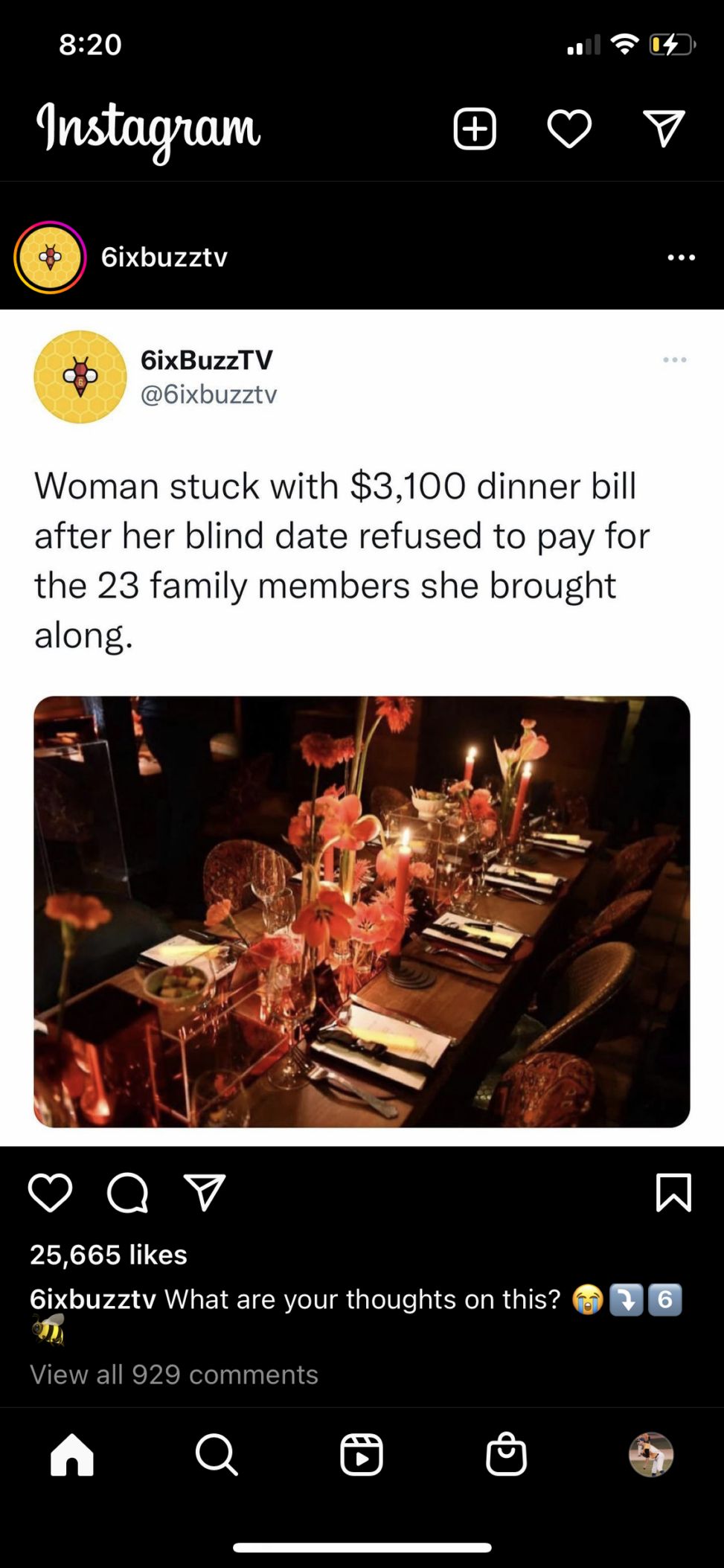Image Attribution: “Assignment 3 – SNS Photo” by Aaron Lemoine is licensed under CC BY-NC. (See interactive map)
Assignment 3 Part A:
By: Aaron Lemoine – T00568514
The most engaged Social Networking Sites (SNS) used on a day to day basis for entertainment and interpersonal communication is Instagram and Facebook. Personally, I use these applications for up to 4 hours to communicate, consume, and share media on a daily basis.
Facebook creates a perfect network environment in order to connect and communicate with my friends, both old and new, as well as family members all around the World. Facebook’s platform creates an opportunity to create more friendships through things as simple as comment discussions. Also, the ability to have a voice online to share thoughts and beliefs has made this platform superior since day one. A negative aspect Facebook has, is it generates negative drama and tension within relationships through sharing thoughts or beliefs. As of recently, a huge contributor to drama online has been between the vaccinated and anti-vaxxers. This has created quite a divide within my circle of friends, and family. But online, everyone has their voice and opinions and wants to be heard, Facebook thrives off on online interaction and engagement. “We looked at how much total support, emotional support, companionship, and instrumental aid adults receive. On a scale of 100, the average American scored 75/100 on a scale of total support, 75/100 on emotional support (such as receiving advice), 76/100 in companionship, and 75/100 in instrumental aid” (2011, Keith Hampton, Social Networking Sites and Our Lives)
As for my main SNS used for entertainment, scrolling through Instagram for around 2-3 hours a day is a norm. Although I tend not to create or alter media too much on this app, This SNS provides me with the visual content of a large community that I love to see whether it is celebrities, news, or my friends and family. Instagram is great for visualization but, I personally think a lot of people try to look like they live a lavish lifestyle or look a certain way constantly through this app. This can be done through things like filters, which creates tons of insecurity for all. The general public within this app are completely influenced by what they see on there feeds. What’s become most noticeable for me has been using Instagram on the web, versus a mobile device. Instagram has limited features on the web, whereas the application on a smartphone has plenty of features that the web does not have. Meaning, Instagram wants to stay as close to you as possible and be in your pocket at all times for its usage making it an accommodating addiction for many. “Mobile devices are a primary channel for social media, and our study highlights disparities in access to digital technologies with Internet access among US young adults by race/ethnicity, education, and subjective financial status. Findings from this study may guide the development and implementation of future health interventions for young adults delivered via the Internet or social media sites.” (2016, Andrea Villanti, Social Media Use and Access to Digital Tech in Young Adults)
Both Facebook and Instagram have become similar, but different traits within their respective platforms. Both give you the ability to share thoughts, pictures, video reels, geolocation options, direct messaging, and have the same types of users. A toxic trait of both of these platforms is how easily users have the power to be inconsistent with actual identity or personality. It is very simple for users to change who they actually are over the web. They are very stalker friendly platforms as well, depending on your privacy settings. It’s very accessible for anybody to see where you are, where you work, and other personal information that you may have available on your profiles.
Resources:
Pew Research Center Internet and American Life Project, Keith Hampton, June 16th 2011, PIP_-_Social_networking_sites_and_our_lives.pdf
